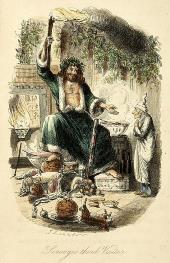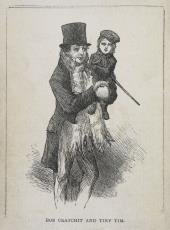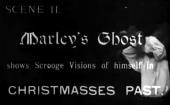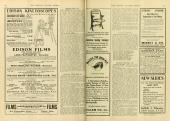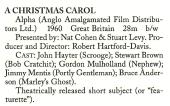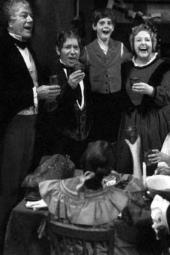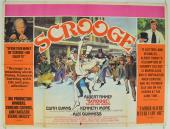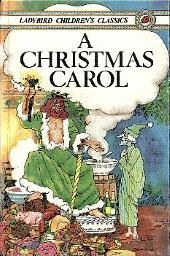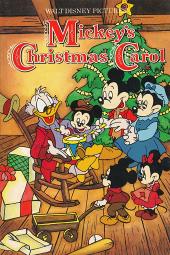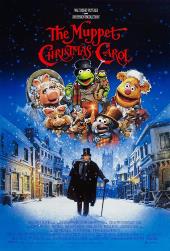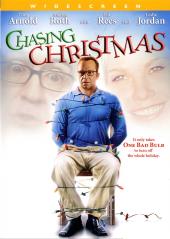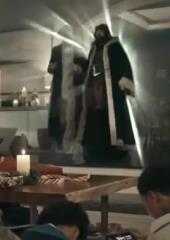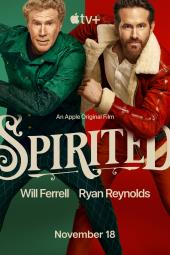Novella
A Christmas Carol
- by Charles Dickens
- (Chapman and Hall, December 1843)
According to my Grandpa Main’s notes (which formed the basis of the first version of the ITTDB), he struggled with what he called the Carol Question as long ago as 1916. Is there actual travel through time in “A Christmas Carol” or not? It’s easy to see why the Carol Question is central to the ITTDB. On the one hand, Scrooge does take a clear trip to the past:
Now if that’s not time travel, what is? Ah . . . “Not so fast!” says Ghost!
Even Ghost Himself admits there’s no interaction with the past. Observation is permitted, but not interaction. They might as well be watching a movie! In general, if you can’t interact with the past and the past can’t see you, then there’s no actual time travel!
Fair enough, but what about Future Ghost? Isn’t He bringing information from the future to Scrooge? Transfer of information from the future to the past may be boring compared to people-jumping, but it is time travel, so the Carol must be granted membership in the list after all, don’t you think? Ah, not so fast again! At one point, Scrooge asks a pertinent question:
The answer is critical to whether time travel occurs. The difference between things that May Be and things that Will Be is like the difference between Damon Knight and Doris Day: Both are quite creative, but (as far as I know) there’s only one you go to for a rousing time travel yarn. Future Ghost never clear answers the question, and moreover, Scrooge appears intent on not having the future he sees come true. So, I want to say that Scrooge saw only a prediction or a prophecy or a vision of a possible future—which is, at best, debatable time travel.
Thus speaketh the ITTDB.
—Michael Main
They walked along the road, Scrooge recognising every gate, and post, and tree; until a little market-town appeared in the distance, with its bridge, its church, and winding river. Some shaggy ponies now were seen trotting towards them with boys upon their backs, who called to other boys in country gigs and carts, driven by farmers. All these boys were in great spirits, and shouted to each other, until the broad fields were so full of merry music, that the crisp air laughed to hear it!
Now if that’s not time travel, what is? Ah . . . “Not so fast!” says Ghost!
“These are but shadows of the things that have been,” said the Ghost. “They have no consciousness of us.”
Even Ghost Himself admits there’s no interaction with the past. Observation is permitted, but not interaction. They might as well be watching a movie! In general, if you can’t interact with the past and the past can’t see you, then there’s no actual time travel!
Fair enough, but what about Future Ghost? Isn’t He bringing information from the future to Scrooge? Transfer of information from the future to the past may be boring compared to people-jumping, but it is time travel, so the Carol must be granted membership in the list after all, don’t you think? Ah, not so fast again! At one point, Scrooge asks a pertinent question:
“Before I draw nearer to that stone to which you point,” said Scrooge, “answer me one question. Are these the shadows of the things that Will be, or are they shadows of things that May be, only?”
The answer is critical to whether time travel occurs. The difference between things that May Be and things that Will Be is like the difference between Damon Knight and Doris Day: Both are quite creative, but (as far as I know) there’s only one you go to for a rousing time travel yarn. Future Ghost never clear answers the question, and moreover, Scrooge appears intent on not having the future he sees come true. So, I want to say that Scrooge saw only a prediction or a prophecy or a vision of a possible future—which is, at best, debatable time travel.
Thus speaketh the ITTDB.
—Michael Main
If these shadows remain unaltered by the Future, the child will die.

